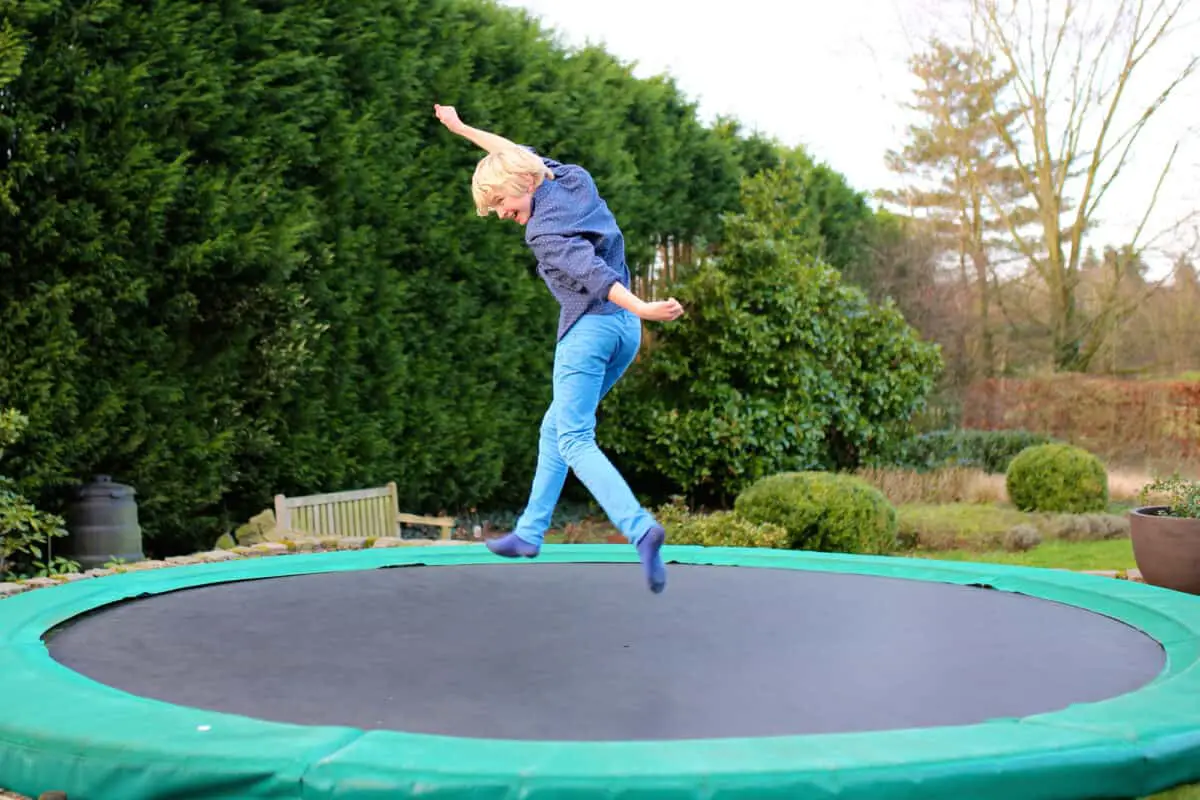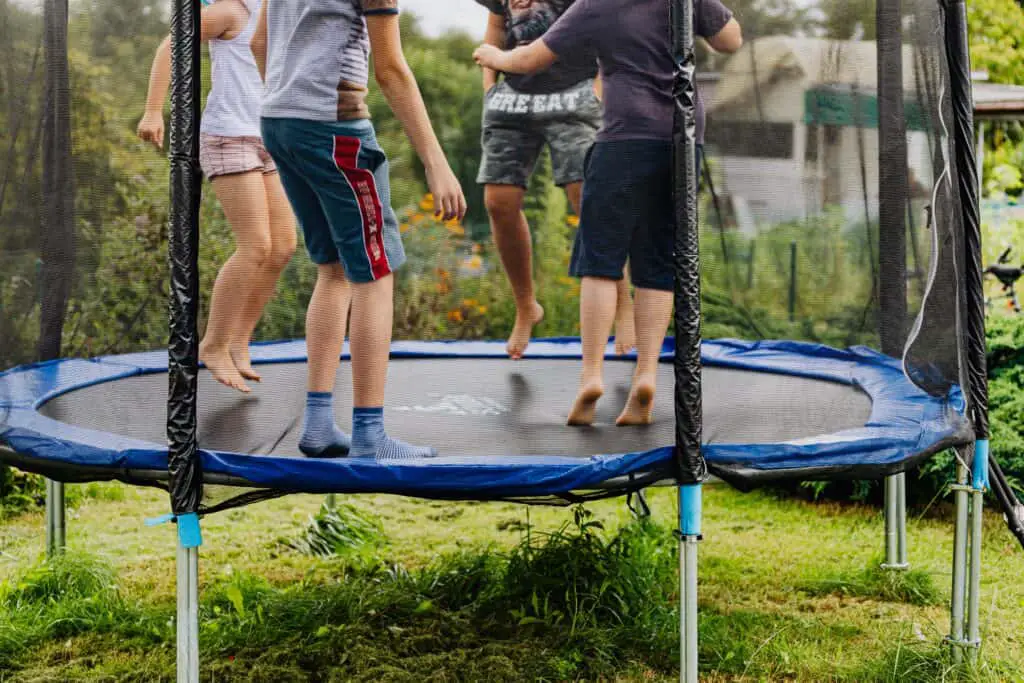For a long time, children have taken pleasure in jumping high and feeling the freedom of soaring through the air on a trampoline.
Engaging in trampoline therapy can be a thrilling and enjoyable way to both play and exercise.
Jumpers can also get therapeutic benefits for physical, mental, and emotional help when used safely.
Studies have demonstrated that exercise provides extra advantages for individuals who have Attention-deficit/hyperactivity disorder (ADHD), autism, or other developmental conditions.
Engaging in play and exercise can provide advantages for individuals with ADHD and those on the autism spectrum, regardless of age.
Trampoline therapy has gained popularity as a new form of treatment.

Table of Contents
What Is Trampoline Therapy?
Trampoline therapy, also known as rebound therapy, distinguishes itself from other forms of therapy.
It is recognized that individuals diagnosed with ADHD or autism may feel overwhelmed in group settings, such as group sports.
Individuals with developmental disorders frequently feel overwhelmed by team sports, gym environments, or group exercise sessions.
Related Article: The Benefits of Trampolines for Autism.
Trampolining is a unique way to stay active and get exercise.
It offers a range of benefits for the jumper, without the overwhelming feeling that can come with more conventional forms of exercise.
Trampoline therapy is also highly adaptable and easy to incorporate into a routine.
Trampoline therapy does not have to take place in a formal setting like a dedicated trampoline center or with a therapist.
It can be customized to suit the needs of individuals and families. Having a trampoline at home provides easier access to therapy.
This product is easily accessible and, when used with appropriate safety measures and supervision, can be a helpful way for users to enjoy it while also involving their families in the activity.
Benefits of Trampolining For Children With ADHD
Individuals with ADHD can also benefit from trampoline therapy, according to the Attention Deficit Disorder Association.
Those with ADHD often struggle with clear thinking due to reduced dopamine levels in the brain, a common symptom of the disorder.
Regularly exercising, such as jumping on a trampoline, can increase dopamine levels. This can lead to improved brain function and clearer thinking.
Engaging in physical activity can have a positive impact on mood by releasing certain hormones.
Trampoline therapy has several advantages, including addressing sensory imbalances, boosting dopamine levels, inducing relaxation, and enhancing body movement awareness.
Benefits of Trampolining For Children With Autism
Trampolining is a beneficial activity for both adults and children who experience developmental disorders that cause sensory imbalances.
It can be particularly helpful for individuals on the autism spectrum who seek relief from these imbalances.
People with autism often rely on repetitive physical movements like rocking, clapping, and swinging to deal with their imbalances.
Trampolining is a rhythmic and calming way for individuals on the spectrum to incorporate movement.
Children with autism spectrum disorder often develop a dependence on sedentary activities like playing video games.
This overuse can result in weight gain and social isolation.
Encouraging physical activities can help to counteract the negative effects of passive activities and provide an outlet for children with autism.
People who are on the autism spectrum may face challenges in developing motor skills and coordination.
One way to address this is by incorporating trampoline therapy or outdoor trampoline activities that can boost muscle tone, enhance motor skills, and aid in weight management by burning calories.
Trampolining can also help individuals on the spectrum with coordination, muscle control and balance.
Trampoline therapy and recreational jumping on a trampoline can be beneficial for individuals on the autism spectrum as it can enhance their body awareness.
The repetitive jumping can help children learn to control the direction they are bouncing and guide their bodies effectively.
People can concentrate on maintaining an upright position and managing their body’s location in relation to the trampoline.

How Trampolines Help Mental Health
Engaging in exercise has been proven to have positive effects on anxiety and depression.
Cortisol has been identified as the primary contributor to these conditions, but exercise has been shown to mitigate its effects.
By enhancing cognitive clarity, promoting emotional regulation, and boosting focus, exercise has a valuable role to play in managing these mental health concerns.
Studies have indicated that performing repetitive actions like running and jumping can result in the release of neurotransmitters like norepinephrine and serotonin.
Research has demonstrated that repetitive motions can be helpful for individuals suffering from depression and anxiety, as well as those with ADHD, autism spectrum disorder, or developmental disorders.
These motions can also produce a meditative effect on the brain, leading to a sense of calm.
In 2006, The Journal of Psychiatry & Neuroscience published a review providing evidence that exercise has comparable effects to anti-anxiety and anti-depressive medications.
Additionally, jumping can promote better sleep quality, leading to a more restful night’s sleep.
Improving overall health, reducing stress levels, and enhancing mental health are some of the benefits that individuals can derive from this.
Safety Precautions to Take
Trampolines should be considered a danger unless safety precautions are put in place.
It’s essential to have safety measures in place when trampolining, and one of those measures is installing high-quality trampoline safety netting.
This netting has a strong mesh that is crucial in preventing jumpers from falling over the side.
Additionally, it’s helpful for users to reposition themselves on the jumping surface safely.
When installed properly, safety padding acts as a buffer for jumpers, covering the edges of trampolines, as well as the springs and frame.
To maintain their effectiveness, it’s important to regularly inspect these pads for any signs of damage, ripping, or weathering.
It is important to ensure that there is always adult supervision present when both children and adults are using the trampoline. This can greatly reduce the likelihood of any injuries occurring.
It is important for supervisors to ensure that only one person uses the trampoline at a time to prevent injuries.
The majority of trampoline accidents happen when multiple jumpers are on the surface simultaneously.
It is important for all users to understand that they should not attempt any reckless stunts or tricks on the trampoline.
This includes flipping, cartwheels, or somersaults, as these activities often result in injuries.
To ensure stability and safety, it is important to place the trampoline on a level area of the property.
This will prevent the trampoline from wobbling or tipping over during use.
Additionally, a flat jumping surface with no slope will minimize the risk of jumpers slipping or falling off the trampoline.
It is important to ensure that trampolines are located within a fenced area to prevent any potential injuries for individuals who may wander onto the property and attempt to jump on the trampoline.
Regular safety checks should be conducted on trampoline equipment.
Adults must ensure that the netting, jumping surface, and padding are free from any holes, tears, or damage.
Any harm to the structure may compromise the trampoline’s performance and cause it to function differently from its original design.
Before purchasing a trampoline, it is important for potential owners to review the requirements of their homeowner’s insurance policy.
It is common for many policies to exclude coverage for injuries related to trampolines.
Conclusion
Using a trampoline regularly can be beneficial for children with autism spectrum disorders and ADHD as it helps them to enhance their balance and motor skills.
Trampolining exercises the entire body, leading to improved muscle tone, joint function, and flexibility.
Kids love to jump and bounce around, which is great for their health as they get to breathe in fresh air and soak up some sunshine while having fun.
This activity offers a range of health benefits.
It’s important to note that trampolines can be beneficial for people of all ages and abilities, including those with autism, ADHD, or other developmental disorders.
When used safely, trampolines can greatly improve physical fitness, behavior, and overall quality of life for both adults and children who have special needs.
Stay safe and enjoy the trampoline responsibly.
Related Reading:
